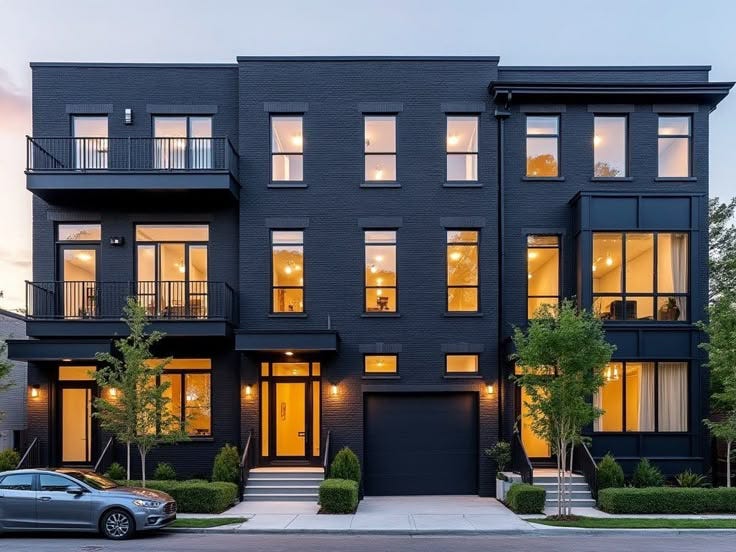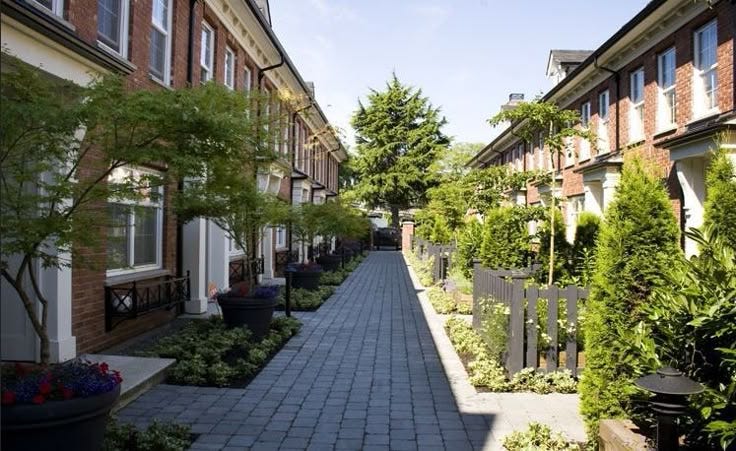The Chain Reaction That Changes Everything
When a new townhouse goes up in your neighborhood, it doesn't just house one family—it sets off a remarkable chain reaction that can help address housing affordability across all income levels. This isn't wishful thinking; it's an economic phenomenon called "filtering," and recent research is showing just how powerful it can be. The research also proves that not allowing more homes to be built—even for high-income residents—pushes up all rents, making it harder for low-income tenants to remain in their neighborhoods.
The concept is simple: when new market-rate housing is built, it creates opportunities for people to move up the housing ladder, freeing up older, more affordable units for others. Think of it like a game of musical chairs, except every time you add a new chair, everyone gets a chance to find a better seat.
What Migration Chains Look Like in Real Life
Here's how housing migration chains actually work: A young family living in a cramped two-bedroom apartment sees a new three-bedroom townhouse built in their neighborhood. They decide to move, leaving their apartment available. A couple of graduate students who were sharing a single family house decide to move to the two-bedroom apartment instead, allowing a working parent who was renting a basement apartment to take over the house rental. That basement apartment becomes available for someone currently sleeping on a friend's couch.
Recent research tracking individual address histories found that 70% of migration chains started by new high-end units eventually reach below-median income neighborhoods before ending. In practical terms, this means building 100 new market-rate units reduces demand in lower-income areas by approximately 70 units—equivalent to adding 70 depreciated units in those neighborhoods.
The Seattle Success Story
Some compelling evidence of these migration chains comes from Seattle's experiment with "light-touch density." Since the mid-1990s, Seattle's Low-Rise Multifamily (LRM) zoning has allowed property owners to convert aging single-family homes into townhomes, adding 18,000 new units and increasing the housing stock in those zones by about 75%—roughly 3% per year.
The results have been remarkable. These new townhomes have generally become starter homes, enabling homeownership for lower-income, younger, and more diverse households. Even more surprising to skeptics, home values in areas with this new development appreciated at the same rate as traditional single-family neighborhoods, proving that adding moderate density doesn't harm existing property values.
Tobias Peter's research on Seattle demonstrates what he calls the "Housing Abundance Success Sequence"—allowing market forces to use by-right zoning to drive small-scale development, supported by clear and simplified regulatory frameworks. Critically, this approach requires no government subsidies and actually generates higher local tax revenues for cities and townships.
Why Middle-Income Housing Is the Sweet Spot
Focusing on middle-income housing— what planners often refer to as "missing middle" housing like townhomes, duplexes, and small apartment buildings—offers several strategic advantages:
Broader Impact: Middle-income housing serves as the crucial link in migration chains. When middle-class families can find appropriate housing, they're more likely to move out of smaller units that can then serve first-time renters or buyers.
Financial Viability: Unlike subsidized affordable housing, middle-income housing can be profitable for developers without government assistance, making it more scalable and sustainable. Most communities are attempting to solve for tens of thousands of households who each need large subsidies in supply-constrained markets. Only a tiny fraction of eligible households actually receive a subsidy because it simply can’t be scaled to meet all of the needs.
Community Acceptance: Research from Seattle and Charlotte, NC shows that light-touch density development adds thousands of new homes while having no adverse effect on nearby single-family home values, making it more politically feasible than high-density development.
Speed of Delivery: Because it doesn't require complex financing structures or lengthy subsidy approval processes, middle-income housing can be built more quickly than deeply affordable units.
The Path Forward: What Communities Can Do
Based on the Seattle model and similar successes, communities can take concrete steps to enable more middle-income housing in more places:
1. Reform Zoning Laws
Allow by-right development of townhomes, duplexes, and small apartment buildings in areas currently restricted to single-family homes but adjacent to commercial zones or higher density residential areas. Seattle's success came from allowing property owners in select districts to use their land more efficiently through clear zoning rules.
An important side note here is that Seattle only allowed townhomes and small-scale low-rise development in a very small share of its overall neighborhoods. As result, the impact on affordability across the city was muted because most single family districts remained very difficult to build anything other than large single family homes in. Had the City allowed for transitions in more areas, the evidence suggests that the city as a whole could be much more affordable today.
The lesson to be learned is that zoning reforms, even when fairly modest in scope, should apply to the broadest geographic scope possible.
2. Streamline Approval Processes
Reduce bureaucratic barriers and create predictable timelines for development approval. Complex, lengthy approval processes add costs that get passed on to housing prices. The best thing a local community can do is to make the review and approval process as simple as straight forward as possible. Be really clear about what the community wants and work to approve those types of projects in less than 30 days and without any public meetings required. Keep it short and simple.
3. Invest in Infrastructure
Ensure neighborhoods can support the next increment of residential density by investing in safe, attractive places to walk and bike to. One of the major benefits of living in higher density neighborhoods is the fact that more density can support amenities, like coffee shops, restaurants, neighborhood schools and daycare centers, and even grocery stores. Cities should be investing in the infrastructure necessary to make walking and biking to these places equally as safe and enjoyable as it is to drive a car. This reduces neighborhood traffic and reduces the need to have excessive parking. In turn, it can leave more room for shared green spaces and community amenities.
The Scarcity Problem
Here's the crucial point many communities miss: until supply begins to match demand, even successful filtering will provide only limited relief. National housing production has slowed from 4% annual growth in the 1950s to just 0.6% since the 2010s, while demand has remained strong.
This means that while building middle-income housing will help, it's not a silver bullet. Communities serious about affordability need to support comprehensive approaches that can deliver the millions of additional units needed to fundamentally shift supply-demand dynamics.
Benefits Across All Income Levels
When implemented correctly, middle-income housing strategies create wins across the economic spectrum:
For Low-Income Renters: More housing options become available as people move up the chain, reducing competition and upward pressure on rents for older, naturally affordable units.
For Middle-Income Renters: New purpose-built rental options provide alternatives to competing with higher-income households for limited housing stock.
For First-Time Homebuyers: Townhomes and similar housing types often serve as starter homes, providing ownership opportunities without requiring the income needed for larger single-family homes.
For Existing Homeowners: Property values remain stable or continue appreciating, while neighborhoods become more economically diverse and vibrant.
For Communities: Increased housing supply reduces pressure on displacement, while new construction generates additional tax revenue without requiring public subsidies.
Making It Work
The evidence from Seattle and other successful examples shows that building middle-income housing can be a powerful tool for improving affordability across all market segments. But success requires political will, sustained commitment, and realistic expectations about both timelines and scale.
The "Housing Abundance Success Sequence" demonstrated in Seattle and over two dozen other case studies provides a roadmap: allow market forces to operate through sensible zoning, reduce regulatory barriers, and maintain focus on consistent production over time.
The filtering effect is real, and it works. But it works best when communities commit to building enough housing—consistently, year after year—to gradually close the gap between supply and demand. In a housing crisis affecting millions of Americans, middle-income housing isn't just a nice-to-have policy tool. It's an essential strategy for creating the broad-based affordability that every community needs.




An excellent primer! Any advice on how to get these zoning reforms to happen at a pace fastser than glacial? I was speaking with Commissioner Knight of the GR CC Tuesday evening, explaining that changing just one number in our zoning ordinance would allow me to build 2x as many units. The minimum required lot area per unit in GR's TN-LDR zone is 2000 sq ft, and I'm advocating for it to be changed to 1000 sq ft. I explained that it would almost certainly get changed during the zoning ordinance rewrite, but that will take two years, which means we'll miss out on hundreds of additional units. Her response, given with a laugh: I guess you should wait two years, then. :|
Super well explained! In essence "passing the torch" through the breadth of the housing market.